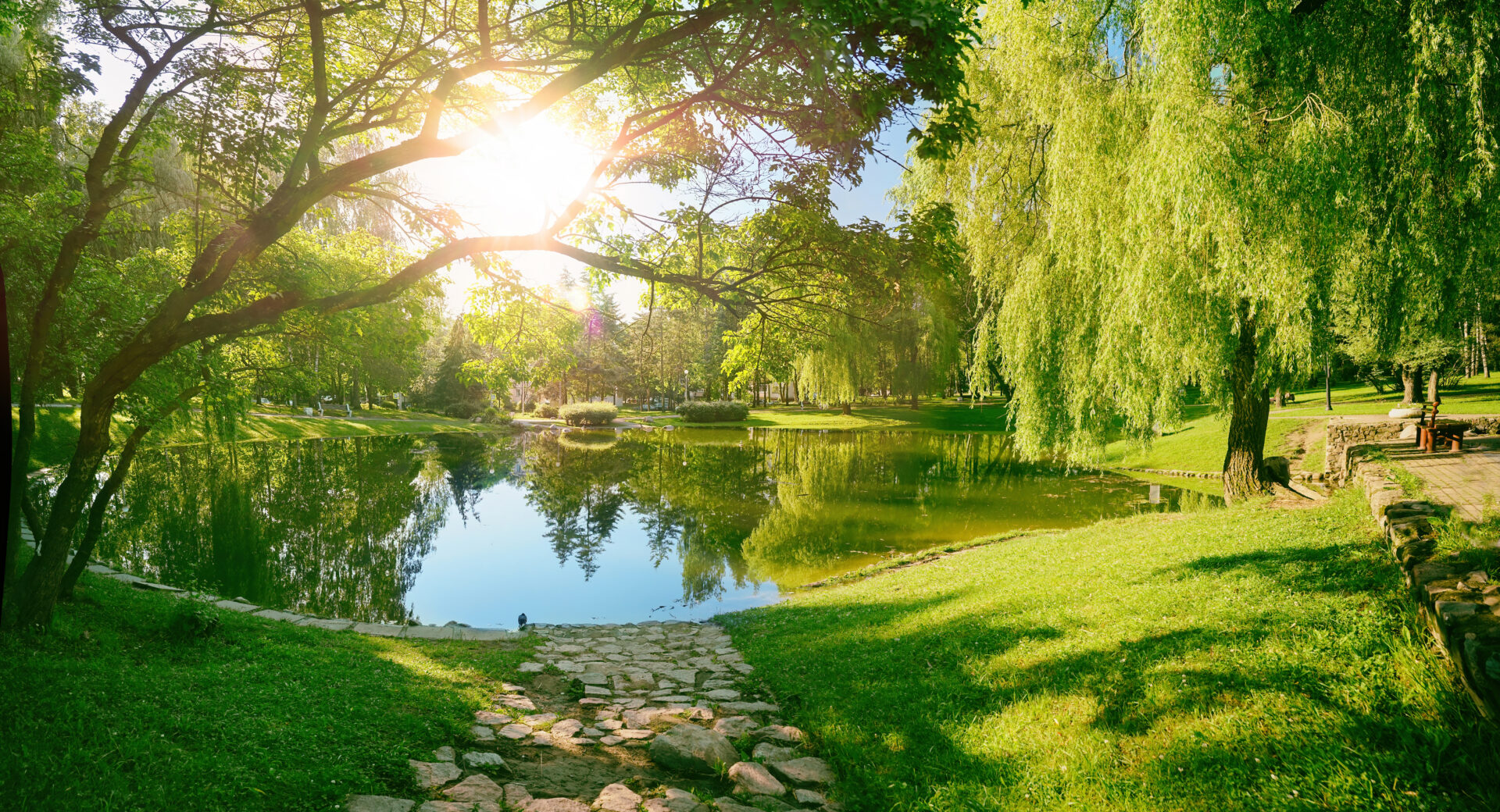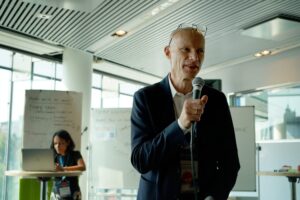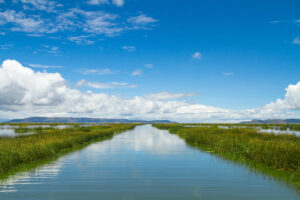- SIWI – Leading expert in water governance
- /
- Latest
- /
- Inclusive and water-smart landscape restoration approaches for successful climate mitigation
Inclusive and water-smart landscape restoration approaches for successful climate mitigation

Local solutions and climate action received great focus at COP28 in December last year. A range of actors brought ideas for how to best address the climate crisis. Many of these involved practical tools and methods for improved climate change mitigation and adaptation, as well as measures for enhanced resilience in local communities. One way of ensuring that climate action is long-term effective and successful for both humans and nature is to make it water-smart and inclusive.
The recent report “The essential drop to reach net-zero: Unpacking freshwater’s role in climate change mitigation” maps links between freshwater and climate change mitigation, a topic that up until now has received little attention. The study, conducted under the UNDP-SIWI Water Governance Facility (WGF) together with SIWI, Stockholm Resilience Centre, Potsdam Institute on Climate Impact Research and GIZ, shows that climate mitigation cannot be achieved at the pace and scale required unless it is water-wise. The report also identifies that practical and local solutions must be at the heart of climate mitigation approaches.
A key message of the report is that water must be mainstreamed into climate mitigation planning and that nature-based solutions (NbS) have a critical role to play in meeting climate mitigation targets. NbS involve measures of protecting, restoring, and better managing ecosystems, including ecosystems’ natural capacity to absorb and store atmospheric carbon, while maintaining or enhancing biodiversity and ecosystem services. One such measure is restoration of degraded forest landscapes.
Building on the findings in the report, SIWI together with GIZ, have embarked on a new project to develop a tool for local action addressing restoration of degraded forest landscapes to secure and improve hydrological flows and water resources. The tool was presented at COP28 with the support of WGF, in a session in the Resilience Hub.
Water-smart Forest and Landscape Restoration
Forests are critical to the successful implementation of ecosystem-based climate change mitigation and adaptation actions, since they provide ecosystem services such as carbon sequestration and storage. In addition, forests are water filters and reservoirs which ensure water quality and quantity in a time where water security is increasingly under threat due to climate change. However, forests are also water consumers, and water scarcity is becoming more serious in many parts of the world. Any action with cross-sectoral implications on water needs to be carefully planned to avoid unintended side-effects.
Forest ecosystems and water security are highly interdependent. Climate change exacerbates the need to support and manage this interdependence in the landscape. To ensure that local and national forest and landscape restoration initiatives are sustainable and successful in the long-term, SIWI is developing the Water-smart Forest and Landscape Restoration (W-FLR) Tool.
The tool will help the user assess water risks and opportunities in FLR together with relevant stakeholders, and to identify response options or solutions to these risks to strengthen water governance and actions on the ground. The tool is organized into a handbook with six modules. It targets sectors, organizations, agencies, and practitioners involved in FLR or other relevant landscape interventions at national, sub-national or local level. The methodology ensures an inclusive and cross-sectoral approach, that integrates and considers local knowledge and needs.
Local and inclusive approaches to climate mitigation
The W-FLR Tool was introduced by Dr. Malin Lundberg Ingemarsson, Programme Manager at SIWI, in the session “Landscapes for water – Scaling up locally-led climate action”, organized in the Resilience Hub by SIWI, UN-REDD, the Australian Water Partnership and AGWA at COP28. The event focused on best-practices, tools, and local initiatives that strengthen climate action, as well as water resilience, across landscapes.
Local communities are on the frontlines of climate change impacts and have a leading role in managing natural resources. Local initiatives take advantage of context-specific knowledge generated from deep ties to a region, its ecosystem, and its unique challenges.
Lundberg Ingemarsson highlighted that By adopting a participatory, cross-sectoral and water-wise approach to forest and landscape restoration, climate mitigation measures can lead to long-lasting positive outcomes for both ecosystems and humans.
The event also showcased two local examples from Zimbabwe and Zambia. In Zimbabwe, local stakeholders have explored nature-based solutions to mitigate climate change impacts on cyclones and droughts. Guided by UNESCO and in collaboration with an international team of adaptation experts, community groups conducted climate risk assessments and strategic planning to identify appropriate adaptation actions for the social and environmental needs of the valley’s villages and mountainous systems. The project resulted in the construction of little check dams, as an inexpensive yet effective way to address their hydroclimatic challenges.
In Zambia, FAO is bringing together local and international partners, civil society, local communities, and academia. Focusing on five key districts, the partners combine local knowledge, national monitoring data, remote sensing data and state-of-the-art models and tools into a comprehensive assessment of Zambezi’s forest-water-climate nexus. This assessment also works to identify new and diverse sources of finance for local climate action, including payment for ecosystem service schemes.
Conclusions
Water-smart and inclusive tools and approaches, such as the W-FLR Tool, aims to ensure that climate action is long-term effective and successful for both humans and nature. As of today, many land-based NbS such as forest restoration often fail to sufficiently consider water. A healthy hydrological cycle is fundamental for landscapes to be or become resilient and to continue providing ecosystem services to local communities and urban areas. This can be achieved through landscape approaches to water management which place communities at the center of decision-making.
Learn more about the Water-smart FLR Tool
Watch the World Water Week’s session covering the importance of the water-forest nexus for sustainable landscape management.
(You must activate cookies to see the video below, or watch it directly on Youtube)
Most recent

Strengthening the Board of Stockholm Water Foundation (SWF)
- Stockholm Water Prize
- Stockholm Junior Water Prize
- Youth and water
- World Water Week

Water is our future – but Sweden still lacks a comprehensive strategy
- Water and the 2030 Agenda
- Groundwater
- Agriculture and water
- Cities
- Disaster risks and water

SIWI’s five takeaways from World Water Week 2024

Don’t resolve an issue, embark on a mission: Henk Ovink





